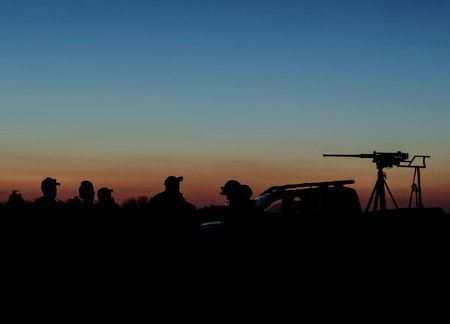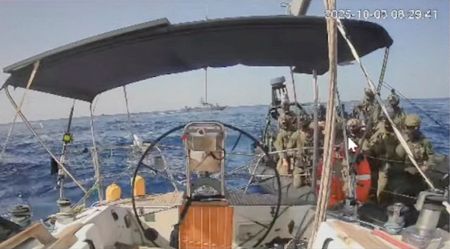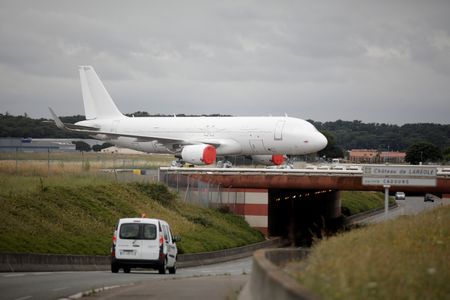By Karol Badohal
WARSAW (Reuters) -U.S. defence firm Northrop Grumman is testing higher calibre cannon bullets to shoot down drones at lower cost, based on feedback from Ukrainian soldiers who are increasingly facing swarms of high-flying unmanned aircraft, a top company executive told Reuters.
Governments are keen for ways to defeat low-cost drones with equally low cost or cheaper interceptors. Currently the most cost-effective way is to shoot down a drone with a bullet, which costs pennies or dollars while many interceptor missiles, such as the Patriot, cost millions of dollars each.
Northrop Grumman has supplied Ukraine with its counter unmanned aircraft system, M-ACE, that uses a medium-calibre cannon to shoot down drones.
“They love the (anti-drone) system. They want more range because they want to shoot these things down further out, which completely makes sense… So we’re taking that feedback,” Northrop Grumman Vice President Steve O’Bryan told Reuters on the sidelines of the Warsaw Security Forum this week.
Ukraine has been adapting its air defences since Russia’s invasion in 2022 to be more effective against increasingly large air raids, which can now comprise hundreds of drones at a time.
Northrop Grumman’s Bushmaster cannon currently uses 25-40 millimetre rounds and could shoot down drones up to a three-mile distance, but increasing the calibre to 50 mm would significantly broaden the range, even five-fold, O’Bryan said.
“They’ve (Ukrainians) asked: Hey, we need a higher calibre so it goes further. And that’s what we’re working on right now. We’re in test on that,” he said, adding the company was looking into 50 millimetre and higher calibres.
He said the Bushmaster cannon, a chain-driven gun which shoots multiple rounds per second, could hit in rapid succession numerous targets attacking in swarms and would be much less expensive than using often scarce air defence missiles.
“Not every target is a Patriot target, right? There’s two things with that. One is Patriot missiles are expensive… Even if they weren’t expensive, they’re a low-density weapon. There’s just not that many of them,” O’Bryan said.
“You need to save them for the targets that demand the Patriot missile.”
Cost-effect considerations led the company to equip the Bushmaster with proximity ammunition that bursts into fragments upon nearing its target, destroying it without the need for a direct hit.
“We’ve got to get on the right side of that cost exchange ratio curve, where we shoot a cheaper round than the drone,” O’Bryan said. “And I think this is one of those solutions that can do it. So, even if you have to fire multiple rounds, you’re still going to be on the positive side of that.”
(Reporting by Karol Badohal; Editing by Susan Fenton)










